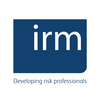In the dynamic landscape of business, where uncertainties are an inevitable part of the journey, mastering the art of risk identification becomes a key determinant of success. Join us as we delve into the intricacies of the risk identification process, equipping you with the skills to navigate potential challenges and steer your business toward sustainable success.
1. Understanding the Importance of Risk Identification
Risk identification is the foundational step in effective risk management. It involves systematically recognizing and documenting potential threats that could impact the achievement of business objectives. By understanding the importance of this process, you lay the groundwork for proactive decision-making and strategic planning.
2. Building a Comprehensive Risk Framework
To master risk identification, it's essential to build a comprehensive risk framework. This involves categorizing risks into different types, such as financial, operational, strategic, and compliance risks. A well-structured framework provides a holistic view of potential threats, allowing for a more nuanced and targeted risk identification process.
3. Involving Stakeholders: Harnessing Collective Insight
The power of collective insight cannot be overstated when it comes to risk identification. Involve stakeholders from various levels and departments in the process. Their diverse perspectives and experiences can uncover risks that may not be immediately apparent, enriching the identification process and ensuring a more thorough risk assessment.
4. Scenario Analysis: Anticipating the Unforeseen
Mastering risk identification involves the ability to anticipate the unforeseen. Conduct scenario analysis to explore potential future events and their impact on your business. By envisioning various scenarios, you prepare your organization to respond effectively to a range of potential challenges, fostering resilience and adaptability.
5. Learning from Past Experiences: Historical Insights
The past can be a valuable teacher in risk identification. Analyze past incidents and their root causes to glean insights into potential risks. By learning from historical experiences, you empower your organization to implement preventative measures and avoid recurring pitfalls.
6. Utilizing Technology: Enhancing Efficiency
In the digital age, technology can be a powerful ally in risk identification. Leverage data analytics, artificial intelligence, and risk management software to enhance the efficiency of your identification process. These tools can analyze vast datasets, detect patterns, and provide real-time insights, enabling a more proactive and precise risk identification approach.
7. Continuous Monitoring and Evaluation: A Dynamic Process
Risk identification is not a one-time activity but a dynamic, ongoing process. Implement continuous monitoring and evaluation mechanisms to stay abreast of evolving risks. Regularly revisit and update your risk identification framework to ensure it remains aligned with the ever-changing business environment.
Conclusion: Navigating Success with a Sharpened Risk Radar
In conclusion, mastering the risk identification process is a fundamental skill in navigating the complexities of the business landscape. By understanding the importance of risk identification, building a comprehensive framework, involving stakeholders, utilizing technology, and maintaining a dynamic approach, you sharpen your risk radar and position your business for sustainable success.
Equip yourself with the skills to be a master of risk identification, and transform challenges into opportunities on your business journey. With a finely tuned risk radar, you not only navigate uncertainties but also chart a course toward resilience, innovation, and enduring success.

No comments yet